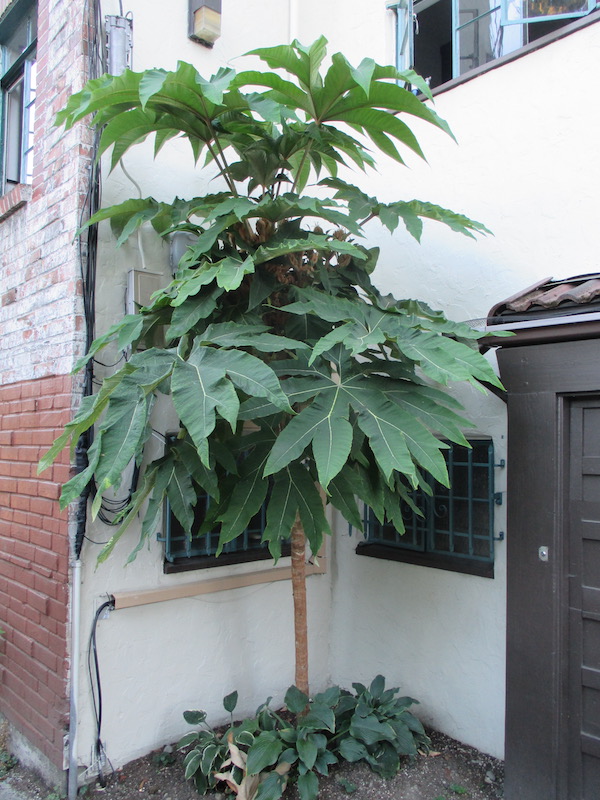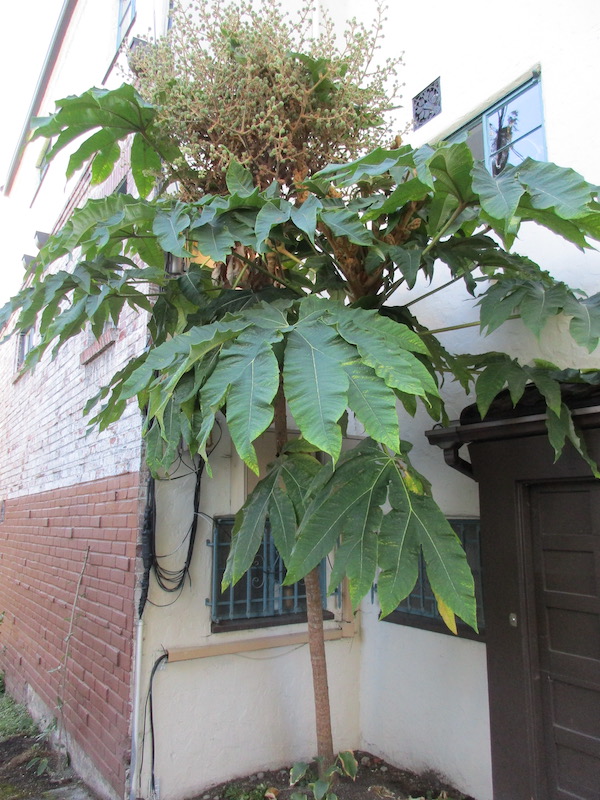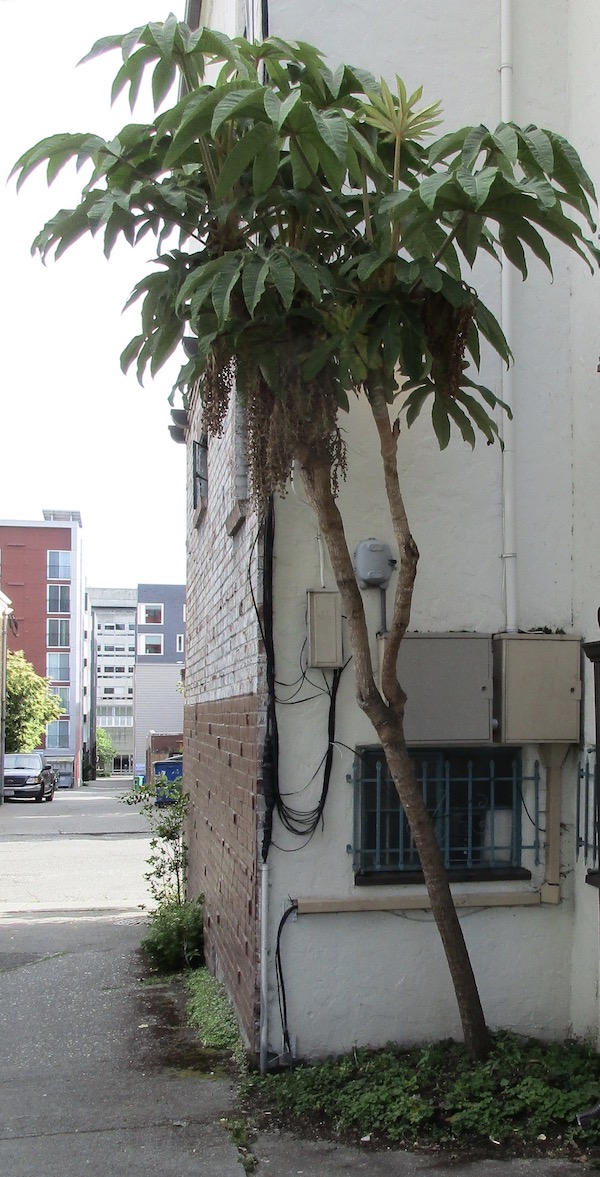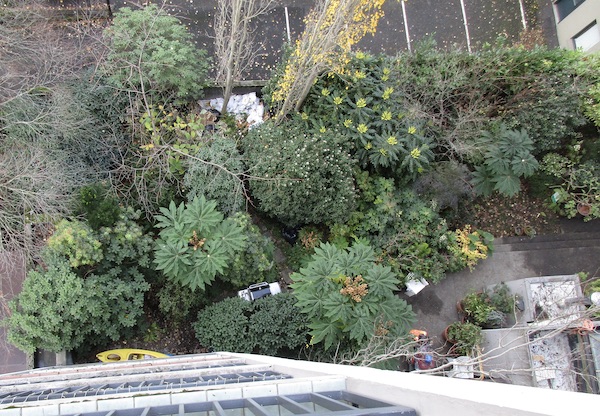| Authors of tree books always must decide what merits inclusion in the category of "large shrubs or small trees." So far, I have ignored Tetrapanax papyrifer. But at least some of these intermediates in Seattle are legitimate small trees, and are so striking visually, that people stare at them in wonder. So, here is an introduction. |
| The species is related to ivy, Aralia, and the like. It is native in China and Taiwan. It is the only species in its genus. A Chinese name is 通脱木 Tong Tuo Mu / T'ung-t'o Mu / Tong Cao Mu. |
| It has been sold in California since 1884. In climates with severe freezing winters, it dies either partly, or wholly. Gentle freezes may defoliate it but do not kill it. If the cold kills the trunk, its roots resprout, and new plants grow rapidly in summer. It favors moist, rich soil, and shade, so is ideal planted in between closely spaced buildings. If planted in sandy soil, in blasting sun, it will be stunted. |
| People like it because it looks tropical, but is really only subtropical, and bears wonderfully large leaves. They are roundish in outline, and boldly jagged. Different plants bear varying leaf sizes. The largest ones with leaves 2 or 3 feet wide, are given names such as 'Steroidal Giant' and 'Rex'. 'Variegata' is a clone with white splotched foliage. |
| It spreads to make straggly thickets from root suckers. An individual trunk can surpass 20 feet in height, and branches sparingly. The appearance of the trunks bereft of leaves is one of gauntness. But unless a freeze occurs, the plant remains luxuriously leafy. In late fall or winter, the apex of the plant bears tiny whitish flowers in large clusters 2 feet or more, clothed in rusty-colored fuzz. Tiny dark purplish-black berries ensue. Neither the flowers nor fruit are considered as attractive as the leaves. |
| In China, its sliced stem pith is used to make rice paper, which is used to paint upon, or fashioned into artifical flowers. Tanaka's Cyclopedia of Edible Plants of the World and Gunther Kunkel reports its roots are edible. Its pith is dried, then used in a cooling herbal drink in S China’s Lingnan region. Also, the species has medicinal uses. It is possible to grow it indoors, if one has enough space, and can maintain the humidity it needs. |
Four of my photos below all show the same plant over a period of years, in the alley behind the El Monterey condominium at 11th Ave NE & NE 42nd St. Other examples in Seattle that are seen easily are at 1409 N 40th St, and at 6420 Carleton Ave S.
Back |

Tetrapanax August 2014 ; photo by ALJ |

Tetrapanax October 2016 ; photo by ALJ |

Tetrapanax May 2019 ; photo by ALJ |

Tetrapanax October 2023 ; photo by ALJ |

Tetrapanax and other plants seen from above in November 2023; photo by ALJ |

